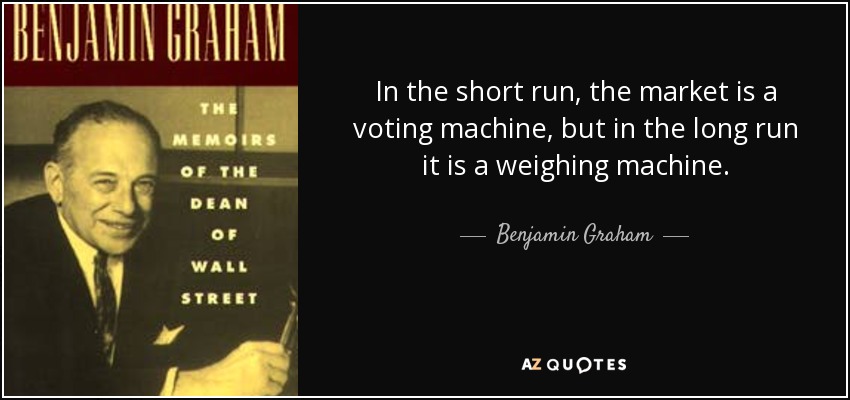Trading Tips: Tracking trend momentum using volume
Each stock has 3 components as per the 1D Tesla chart below:
- price
- time
- volume
 |
| Tesla 1D chart as of 6th Apr 2022 |
The components of price and volume affect the movement of the stock as this moves along a linear scale of time. There cannot be any reversal or going back in time as the ticker moves forward in one direction, unless you drive a nuclear powered Delorean.
 |
| Back to the Future with DeLorean |
Most of the time, we pay most attention to the price and time (interval and duration).
Price is a result of the demand and supply of the stock. Usually, the supply is limited (in terms of the number of outstanding shares available). It is usually the changes in the demand that moves the price. Demand is driven by sentiments and news in the short run.
 |
| Market is a weighing machine in the long run (value seeking) |
The volume bar does not tell you how much is buying or selling, just the total number of (both buy & sell) trades transacted. The colour of the volume bar implies the general trend where green implies more buying and red implies more selling. It is possible for there to be large amount of selling and buying (seen in a tall volume bar or doji candle stick) where the price movement looks minimal or looks unchanged.
| Doji candle sticks |
The candle stick patterns can tell us many things. Let us consider adding trend momentum as part of our analysis. The trend momentum can be found in the volume and other volume related indicators.
Volume can be a key part of our trading analysis (especially for short term trading).
Extract below is the explanation on Volume by Fidelity:
Volume is simply the number of shares traded in a particular stock, index, or other investment over a specific period of time. For example, as of October 17, 2021, the most actively traded US stock, based on a 90-day average, was Camber Energy (CEI) with an average of 135 million shares traded per day.
Seeking Alpha says this about volume:
Volume is the number of shares of a stock that have changed hands over a period of time. Stocks with higher volumes have more investors interested in buying or selling them.
If a stock with a high trading volume is rising, it means there is buying pressure, as investor demand pushes the stock to higher prices. On the other hand, if the price of a stock with a high trading volume is falling, it means more investors are selling than buying.
 |
| Tesla Summary as of 7th Apr 2022 (1 month view) - note that the avg daily volume for Tesla is 26.65 million |
Thus, volume speaks of momentum coming from the buying or selling of the stock. But volume does not explain the reason for the rise or fall, only the momentum of the trend. Looking at a shorter time interval (such as 1H), a decrease or increase in price movement with dropping volume spell the exhaustion of the current trend.
We should consider using a combination of indicators to get "better" understanding of the stock movements. But let us not make the chart overly cluttered or using too many indicators that may confuse us more than help us.
Example of analyzing using Volume
| Tesla Chart (30 minutes interval) zoom in from 4th Apr 2022 |
From the 30min chart above, we noticed that on 4th Apr 2022, Tesla opened at 9.30am EST with much buying interest as seen by the long volume bar. At 11.30am, 4th Apr 2022, we notice a much lesser volume - an loss of the upward (bullish) momentum. Over the course of the day, the volume dropped and thus the price started to move sideways (range) on lower volumes. When the market opened on 5th Apr 2022, the bulls lost the momentum and the bears took over (with selling) from 10am EST and thus, the price dropped till there is a mid day support found.
From the example above, the volume bar worked better when we combine with MACD indicator. There is NO one setup that will give 100% accuracy. But we do see that volume bar acts as a trend momentum and can work better when combine with other indicators.

Comments
Post a Comment